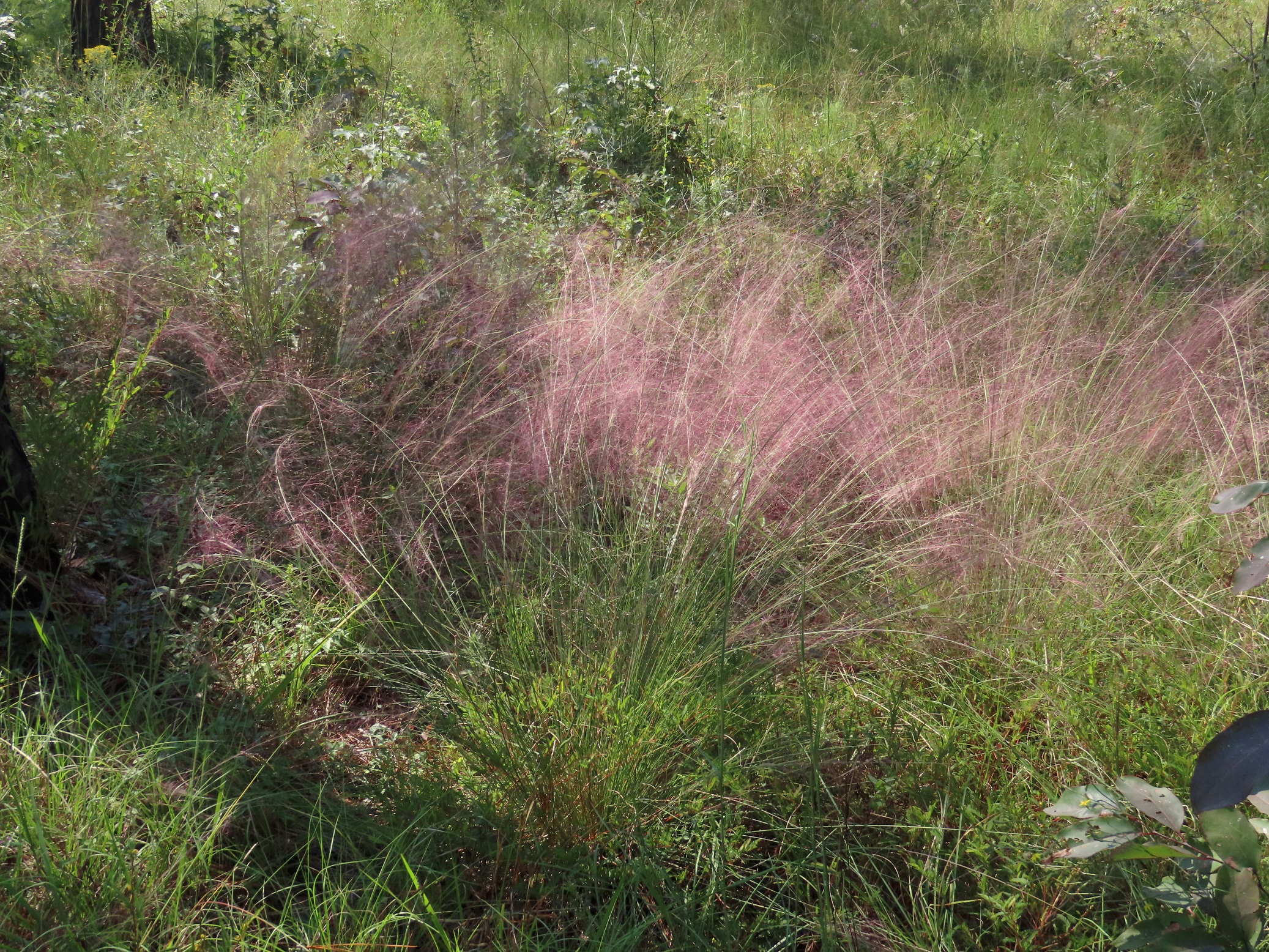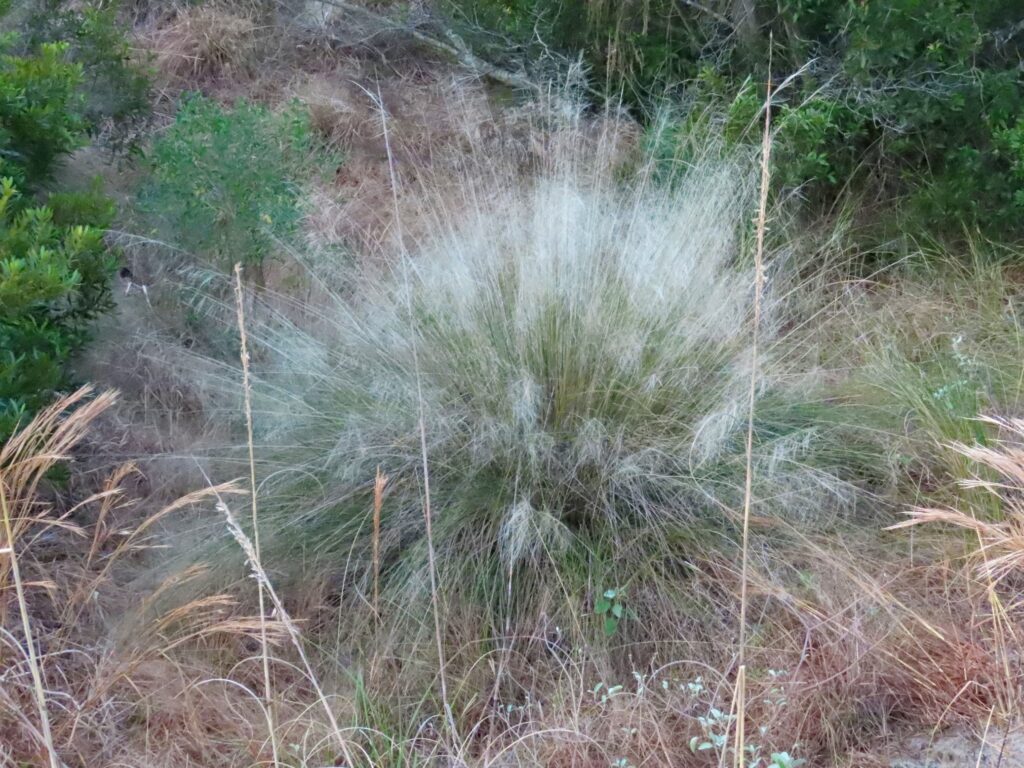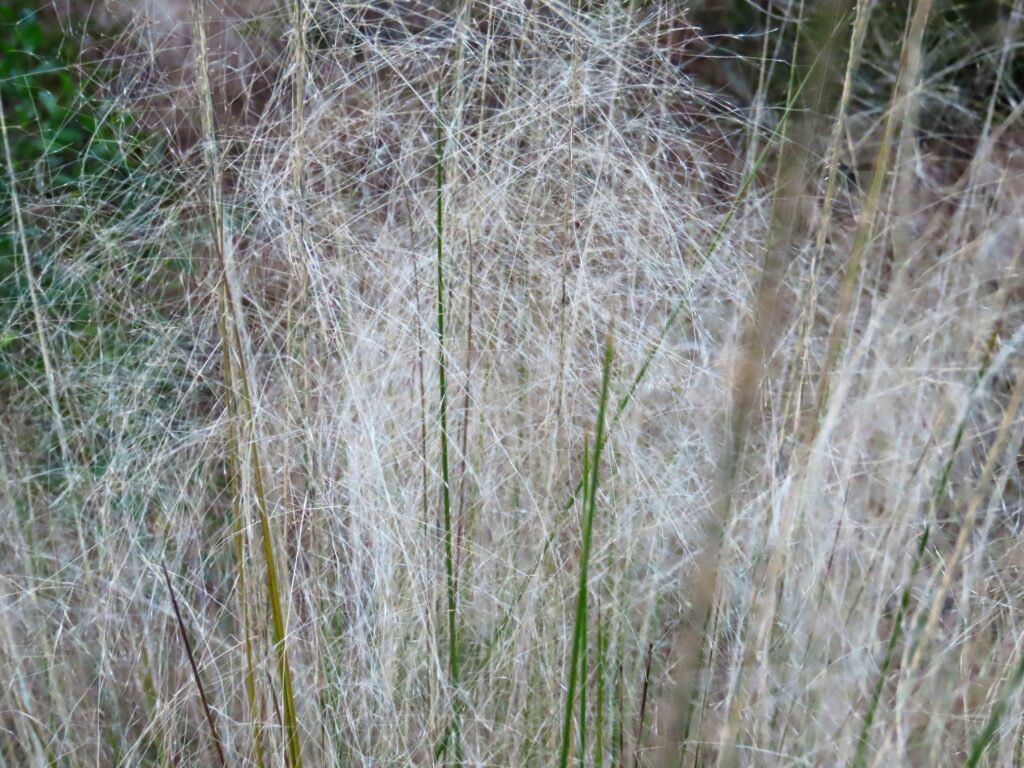


This week for Flora and Fauna we have a culturally significant coastal grass to discuss: Sweetgrass (Muhlenbergia filipes).
Sweetgrass goes by many names but Sweetgrass or Purple Muhly Grass are the most oft used. It’s a large clumping grass, usually growing to waist height, which prefers sandy coastal sites. You’ll most often see it growing between beach dunes, in the understory of hammock and barrier islands, on the fringes of the high marsh, and in the understory of fire-singed pinewoods. The foliage of Sweetgrass has thin, needle-like leaves and is a shade of emerald-green. The grass’ shape takes a domed appearance as its thin blades arch and pile atop each other into a round clump. At the sunset of summer, Sweetgrass will begin to bloom. Long thin flower stalks will swell the circumference of each cluster of grass to near chest height as they burst forth into a purple haze. A fog of tiny magenta flowers will settle over the plant, making an otherwise innocuous grass unmistakable. The plants will continue to bloom well into fall and the flowers will eventually fade to dried, dull-white stalks laden with their miniscule seeds. Sweetgrass is a hardy perennial and will persist for many years.
Sweetgrass also has quite the cultural significance here in the Lowcountry. They are the primary material used in the eponymous Sweetgrass Baskets that the Gullah people have been handcrafting for some 300 years here in the Lowcountry. Other native plants, like Palmettos and Black Needlerush, are also used in the basket making art but Sweetgrass is the heart of each piece. Sweetgrass, along with other species of Muhly Grass, are also cornerstones in any native plant landscaping effort here in the Lowcountry. Being a native plant well adapted to our blistering climate, sandy soils, and both drought and flood, they make a perfect addition to most any coastal landscape plan alongside staples like the Palmettos, Live Oaks, and Yaupons.
Yet despite its hardiness and importance, wild Sweetgrass has experienced significant declines in the last century. Coastal development of our beaches and marsh edges have removed habitat from the Sea Islands and the multi-decade long suppression of fire in forestlands degraded much of its habitat in island interiors and along the mainland coast. Modern forest management techniques have restored fire to many of our forestlands and the use of native plants in landscaping have brought plants back to where they once grew but Sweetgrass populations still remain sporadic in much of the Lowcountry.